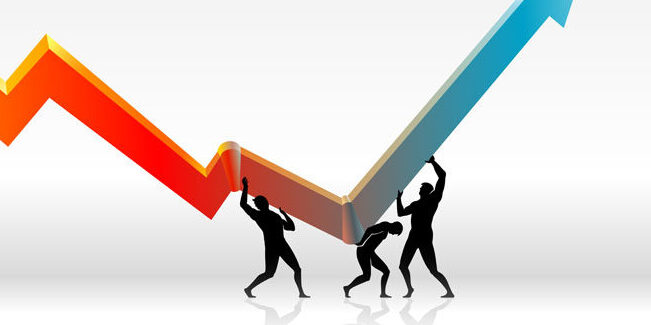
US index futures and European markets rise, and bond premiums get more expensive; investors watchful for developments in the Russia-Ukraine war
After a week of intense swinging in the stock markets, the markets seem to want to recover from the losses accumulated in the period. Despite the tumultuous news, with the escalation of the war and a new wave of sanctions against Russia, European stocks and US index futures advanced.
There is no macroeconomic or monetary policy reference on the agenda capable of marking the course of the markets. The developments of the Russia-Ukraine war, which seems far from over, are leading the news.
Contracts indexed to the S&P 500 and the Nasdaq 100 rose, albeit less intensely than earlier in the day. The Stoxx Europe 600 index was up nearly 1% as investors took advantage of the bargains that came with the week’s drop. The valuation of European company stocks is close to a 16-year low relative to US stocks.
Sovereign bonds around the globe have lost face value. U.S. Treasuries with two and ten-year maturities reversed part of the slope of the curve observed in the wake of the Fed’s minutes on Wednesday, which detailed plans to reduce its balance sheet and announced its willingness to go ahead with the interest rate hike.
All eyes are on the war. Ukraine reported this morning that at least 27 people had been killed and 30 others injured in a Russian missile attack on a railway station that was being used to evacuate civilians in Ukraine, regional spokeswoman Tetyana Ihnachenko said. The station is located in Kramatorsk, in the Donetsk region of eastern Ukraine.
Russian President Vladimir Putin is betting his troops can win a victory in eastern Ukraine by rescuing an army operation after failing to take the capital Kyiv.
The European Union has agreed to ban coal imports from Russia. The sanctions package, which also includes a ban on most Russian trucks and ships from entering the EU, was signed yesterday by the bloc’s diplomats.
And an important change in the course of sanctions: Japan will also ban purchases of Russian coal, Prime Minister Fumio Kishida said. “Russia’s cruel and inhuman actions are coming to light one after another across Ukraine,” Kishida said this morning, adding that Moscow must be held accountable.
Russia’s central bank unexpectedly cut its benchmark interest rate by the most in nearly two decades in a bid to ease an economy that has been battered by an avalanche of sanctions. In an unscheduled meeting, he reduced the rate from 20% to 17% and said further cuts could be made in the coming months if conditions allowed.
Banks take on a new balance sheet season, the ECB meets on Thursday, and important indicators such as the US consumer price index (+7.9% in February, the highest rate in the last 40 years) and the German business confidence indicator ZEW (which plummeted 90 percentage points in March to clearly negative territory, -39.3 points, against expectations of +5 points).
After oscillating between losses and gains, US stocks finally closed in the black. The harsher tone of the Federal Reserve (Fed) left investors wary of the effects of too intense a monetary tightening on the economy. The upside, however, was that markets gained more clarity about the central bank’s next steps. Yesterday, the chairman of St. Louis, James Bullard, said he favored a rate hike from 3% to 3.25% in the second half of 2022, while Chicago Fed President Charles Evans advocated a “restrained” path to taking Fed policy forward. to neutrality by the end of 2022 and the beginning of 2023.
